When names are combined into a single column in Excel, it can make data management tasks like sorting and filtering more challenging. Separating first names, middle names, and last names into individual columns enhances the utility and efficiency of your data.
Separate Names in Excel Using Flash Fill
Flash Fill is a powerful feature in Excel 2013 and later versions that automatically fills your data when it senses a pattern. It's an efficient way to split names without complex formulas or manual copying.
Step 1: In a new column adjacent to your full names, manually type the first name from the first cell. For example, if cell A2 contains "Steve Rogers", type "Steve" in cell B2.
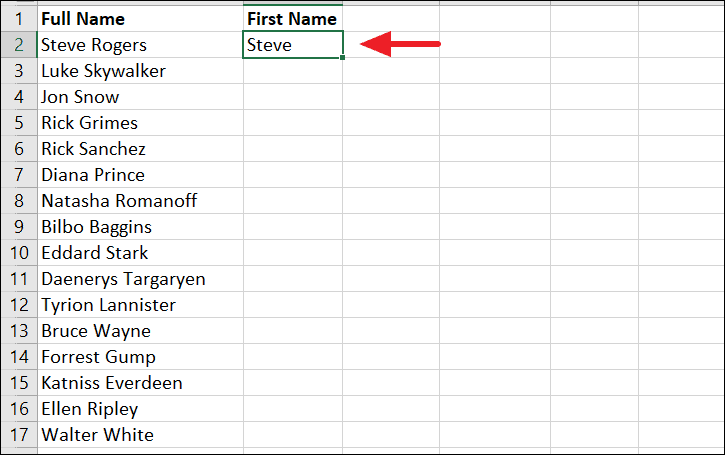
Step 2: In the next cell below, begin typing the first name of the next full name. As you type, Excel will detect the pattern and suggest the remaining first names in a light gray preview.
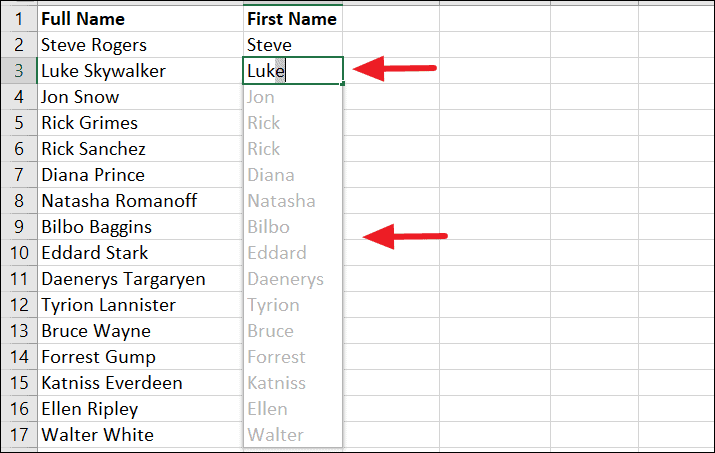
Step 3: If the previewed names are correct, press the Enter key to accept the suggestions. Excel will automatically fill the column with the first names extracted from the full names.
Step 4: Repeat the process in another new column if you wish to extract last names. Type the last name from the first full name, and Excel will again offer to fill the rest based on the pattern.

The result will be your first and last names separated into different columns:
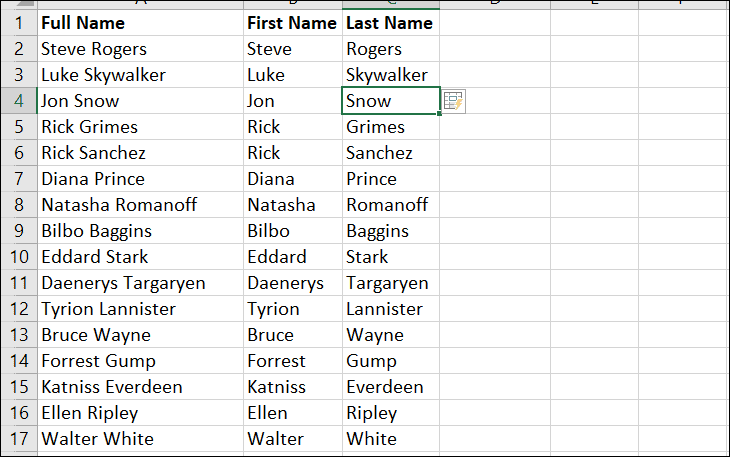
If Flash Fill doesn't automatically suggest the fill, you can trigger it manually. After typing the example(s), select the cells where you want the data filled. Then, go to the Data tab and click on the Flash Fill button in the Data Tools group.

Alternatively, you can press Ctrl + E to activate Flash Fill. Excel will populate the cells based on the recognized pattern.
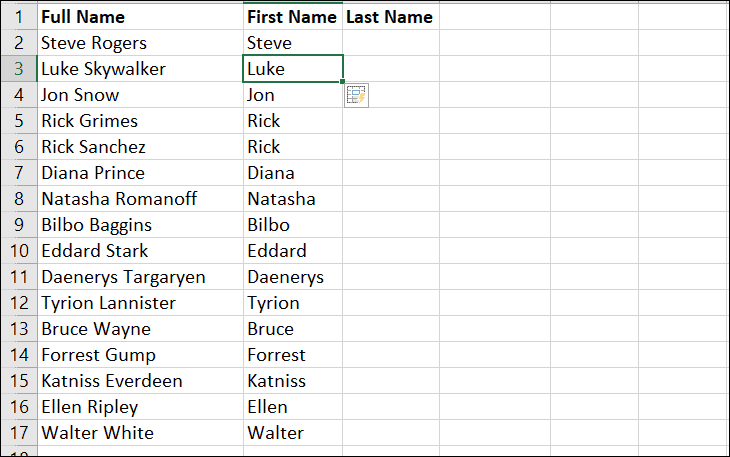
If Excel doesn't detect the pattern after the first entry, you can help it by providing more examples. Type the desired output in the next few cells, then use the fill handle to drag down. Click on the Auto Fill Options icon that appears, and select Flash Fill from the dropdown menu to populate the rest.
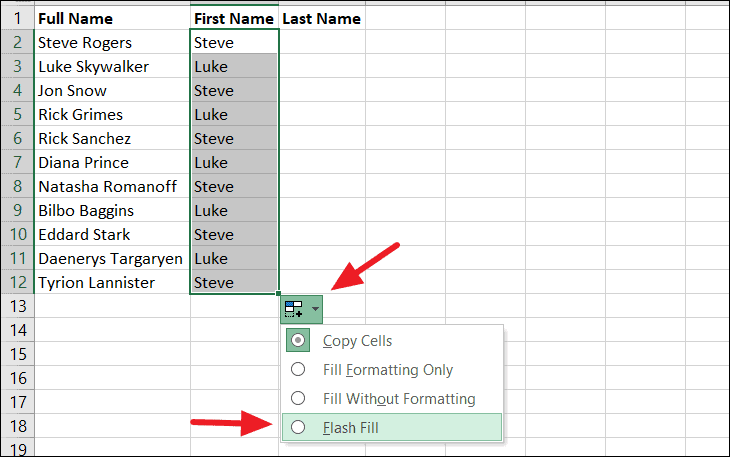
Extract Middle Names Using Flash Fill
Flash Fill can also be used to extract middle names or remove them from full names.
Step 1: In a new column, type the middle name from the first full name. For example, if cell A2 contains "John Fitzgerald Kennedy", type "Fitzgerald" in cell B2.
Step 2: Proceed to the next cell and type the middle name from the next full name. As you type, Excel will preview the middle names of the remaining entries. Press Enter to accept the suggestions.
To remove middle names from full names, type the first and last name without the middle name in the adjacent cell. Provide a couple of examples, and Flash Fill will recognize the pattern to remove middle names from the rest of the entries.
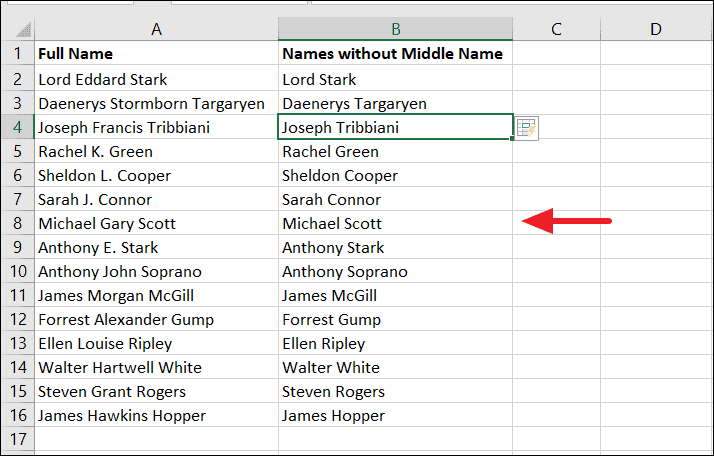
Separate Names Using Text to Columns Wizard
The Text to Columns feature in Excel allows you to split data from one column into multiple columns based on a delimiter such as a space or comma.
Step 1: Ensure there are empty columns to the right of your full names to prevent overwriting existing data. Select the column containing the full names you wish to split.
Step 2: Go to the Data tab and click on Text to Columns in the Data Tools group.
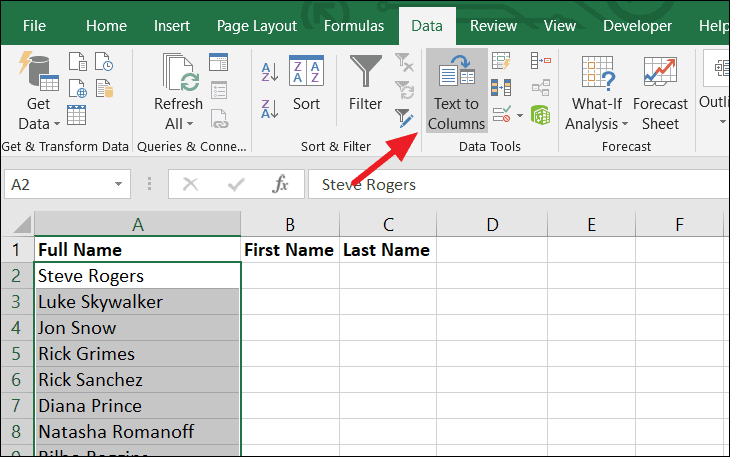
Step 3: In the Convert Text to Columns Wizard, select Delimited and click Next.
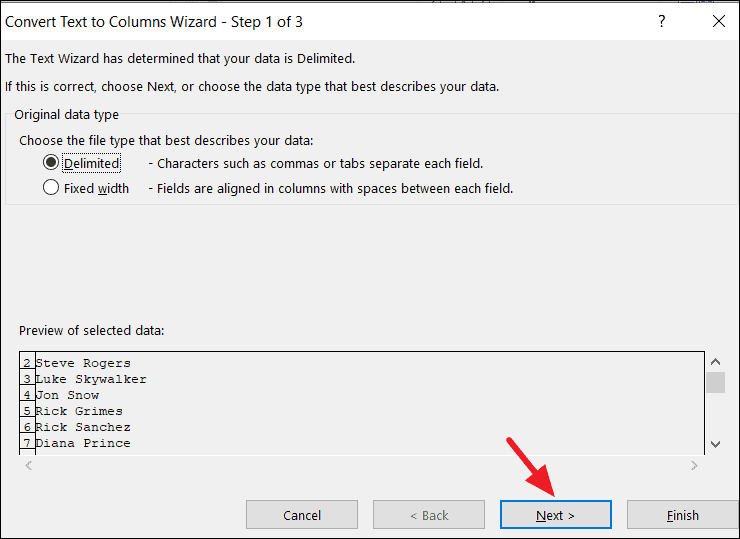
Step 4: Choose the delimiter that separates your data. For names separated by spaces, check the Space option and uncheck any others. The Data preview will show how your names will be split. Click Next.
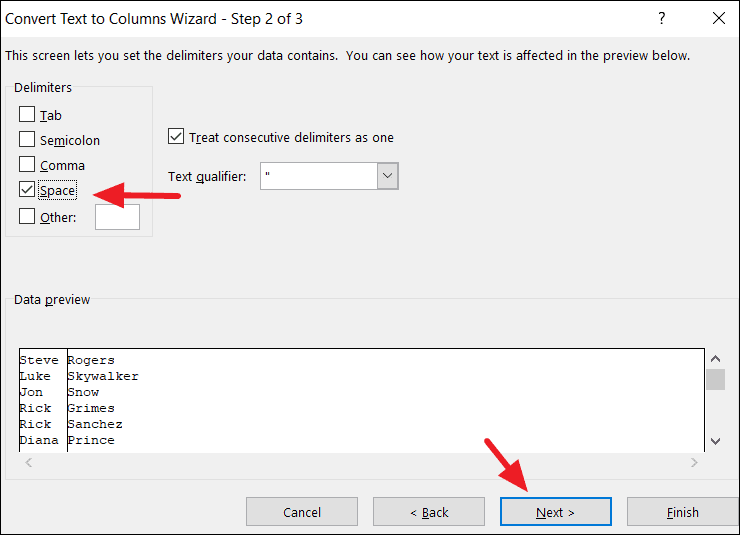
Step 5: In the final step, select the data format (usually General works well) and specify the destination where you want the split data to appear. Click on the destination field and select the first cell where the separated data should be placed. Click Finish.
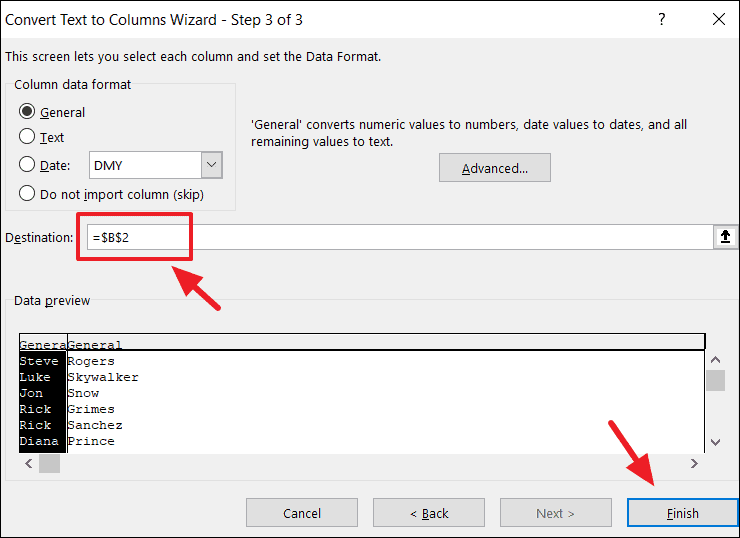
The full names will be split into separate columns based on the delimiter.
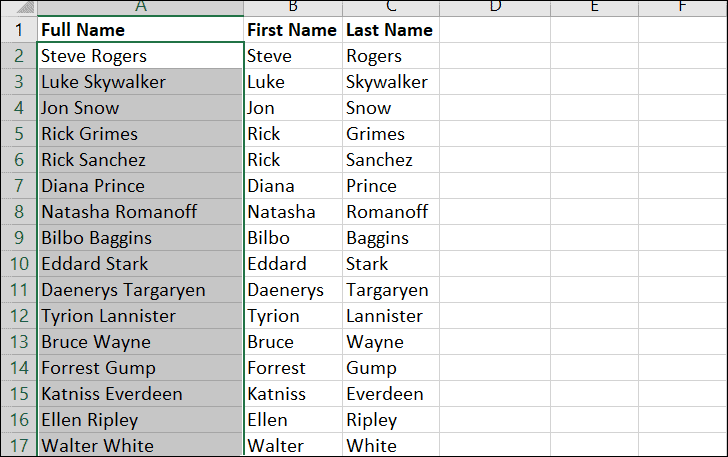
Note: This method creates static data. If the original names change, you will need to repeat the process to update the separated names.
Split Names Separated by Commas
If your names are formatted with commas, such as "Doe, John", you can still use the Text to Columns feature to separate them.
Step 1: Select the column with the full names.
Step 2: Go to the Data tab and click on Text to Columns. Choose Delimited and click Next.
Step 3: In the delimiters options, check the Comma box and uncheck any others. The Data preview will show how the names will be split. Click Next.
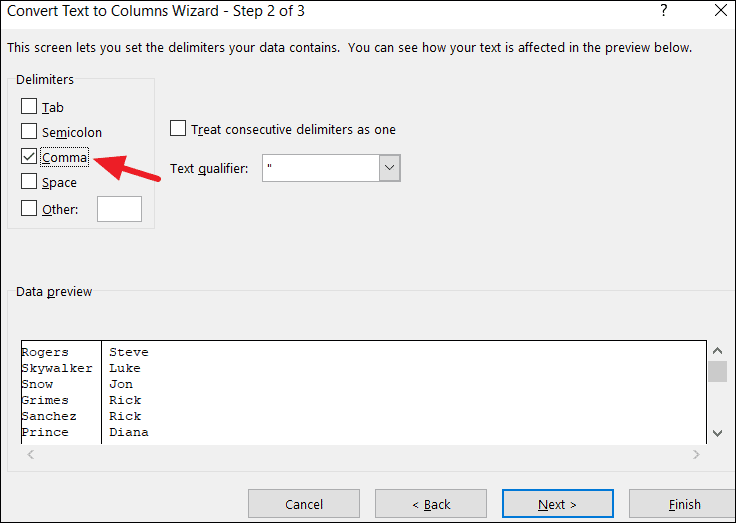
Step 4: Choose the data format and destination as before, then click Finish. The names will be split into separate columns at the commas.

Separate Names Using Formulas
Using formulas to separate names provides dynamic results that update automatically when the original data changes. This method is flexible but requires a bit more effort to set up.
Extract First and Last Names Using Formulas
Get the First Name
To extract the first name from a full name in cell A2, use the following formula:
=LEFT(A2,FIND(" ",A2)-1)This formula finds the position of the space character and extracts all characters to the left of it.

Copy this formula down the column to extract first names from other full names.

Get the Last Name
To extract the last name, use this formula:
=RIGHT(A2,LEN(A2)-FIND(" ",A2))This formula calculates the number of characters after the space and extracts them from the right.
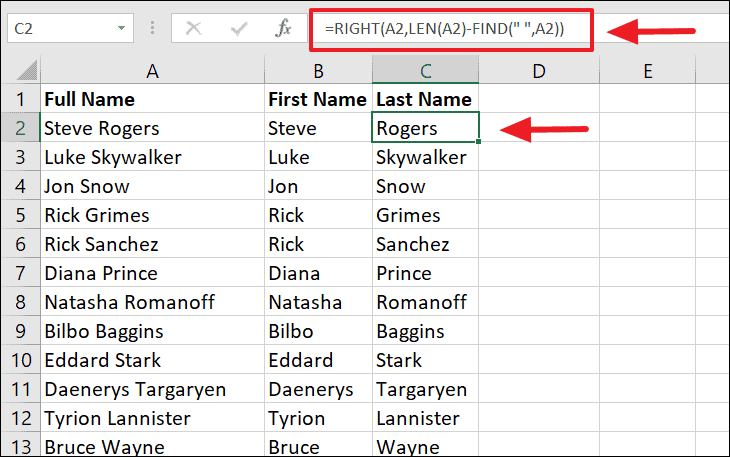
Extract First, Middle, and Last Names Using Formulas
For names that include a middle name or initial, you can adjust the formulas to account for additional spaces.
Get the First Name
The formula for the first name remains the same:
=LEFT(A2,FIND(" ",A2)-1)Get the Middle Name
To extract the middle name, use the following formula:
=MID(A2,FIND(" ",A2)+1,FIND(" ",A2,FIND(" ",A2)+1)-FIND(" ",A2)-1)This formula locates the positions of the first and second spaces to isolate the middle name.

Get the Last Name
To get the last name when there's a middle name, use this formula:
=RIGHT(A2,LEN(A2)-FIND(" ",A2,FIND(" ",A2)+1))This formula finds the position of the second space and extracts the text after it.

By utilizing these methods, you can efficiently separate names in Excel, improving data organization and accessibility. Whether you prefer the automation of Flash Fill, the control of Text to Columns, or the dynamism of formulas, Excel offers powerful tools to handle your data effectively.


